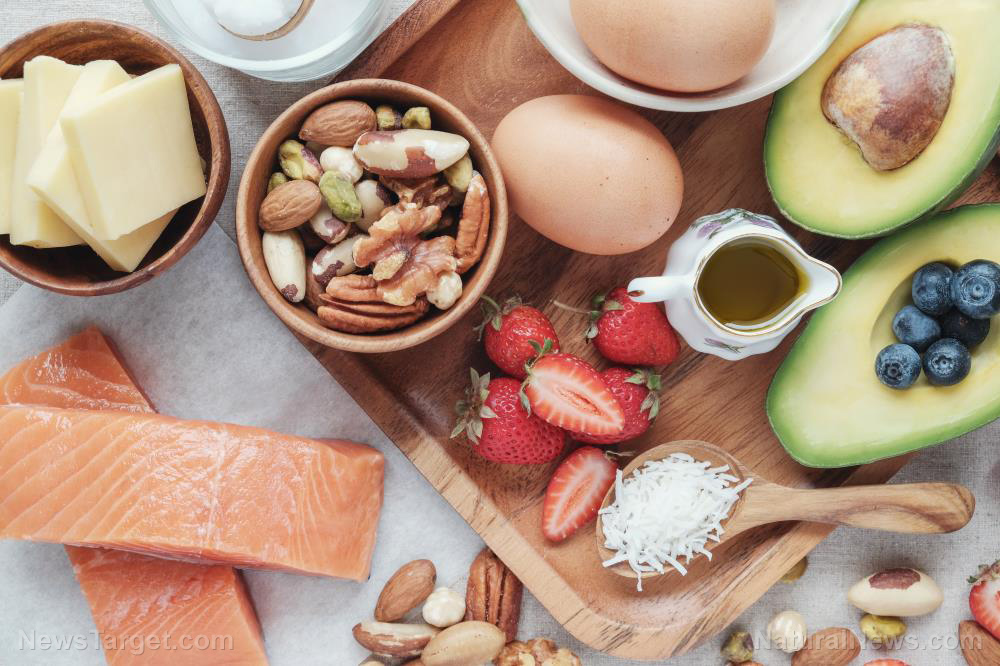
Advertisement
Stuffing your face with bacon, steak and other fatty foods is one way to follow a ketogenic diet. But doing so misses the point by a mile. At its core, the ketogenic diet is meant to improve your overall health and prevent disease.
The ketogenic diet places an emphasis on fat. It still allows for protein and carbohydrates, albeit in moderate to low amounts only. The ketogenic diet works by flipping your body’s metabolic switch from using glucose for energy to using fats and ketones. This can lead to many positive health outcomes, including weight loss.
Unfortunately, the ketogenic diet is tough to stick with. For starters, carbohydrates are normally found in foods that are staples in many cuisines, such as rice and bread. The ketogenic diet throws these foods out the window because of their high-carb content, leaving millions without their staples.
Vegans and vegetarians also find the ketogenic diet difficult to follow because of its emphasis on fat from meats and other animal products. This also raises concerns from nutritionists and health experts because saturated fat from meats can raise bad cholesterol levels and cause weight gain. Both can put you at risk of heart disease.
But it’s not the end of the line for the ketogenic diet. With a few tweaks, nutritionists and health experts made a new and improved version of the ketogenic diet that addresses all of the concerns with the first one: keto 2.0.
What’s different with keto 2.0?
So what’s the deal with this updated version? For starters, keto 2.0 puts an emphasis on plant-based sources of fat, such as olive oil, nuts, avocados and fatty fish like salmon. This way, your diet is still technically high-fat but without the saturated fat that could increase your risk of serious health conditions like heart disease.
In fact, aside from not containing saturated fat, foods like nuts and avocado contain monounsaturated fats that protect your heart from inflammation. By focusing on these, keto 2.0 essentially replaces bad fats with good ones. These plant-based sources of heart-healthy fats are also great for vegans and vegetarians.
Nutritionists say this simple modification effectively preserves the integrity of the ketogenic diet. Plus, it makes the diet much more accessible, which is always a good thing when getting people to adopt healthy diets.
Keto 2.0 also addresses another major problem with the traditional ketogenic diet: lack of fiber. Since it mostly features plant-based foods, keto 2.0 allows you to have fiber while still keeping your total net carb intake low.
Overall, keto 2.0 is definitely healthier than the traditional ketogenic diet since it focuses on eating more heart-healthy unsaturated fats, leaner proteins and more plant-based foods.
Recipe for low-carb chicken salad
Build keto 2.0 into your cooking routine with this tasty recipe for a low-carb chicken salad dinner. It’s a healthy and keto-friendly twist to the classic Indian butter chicken recipe.
Ingredients for 4 servings:
- 8 chicken thighs
- 2 green chili peppers, thinly sliced
- 1 Lebanese cucumber, sliced into rounds
- 1 bunch coriander, leaves picked
- 1 red onion, thinly sliced
- 1 cup truss tomatoes, halved
- 3/4 cup Greek yogurt, divided
- 1/3 cup chopped roasted cashews
- 2 1/2 tablespoons tandoori paste, divided
- 2 tablespoons chopped curry leaves
- 1 tablespoon olive oil
- 2 1/2 teaspoons garam masala, divided
- 1 teaspoon kosher salt
- 1/4 teaspoon coconut sugar
- Juice of 1 lemon
Preparation:
- In a baking dish, combine 1/4 cup of yogurt, 1 1/2 tablespoons of tandoori paste, olive oil and 2 teaspoons of garam masala. Set aside.
- Place 2 chicken thighs on a chopping board and insert 2 skewers through them. Cut parallel to the middle skewer to create 3 separate skewers. Repeat with the rest of the thighs to create 12 skewers.
- Transfer skewers to the baking dish to marinate. Toss until covered. Set aside for at least 30 minutes.
- Preheat the oven to high and place a rack in a lower position inside. Line a second baking dish with foil. It should be narrower than the length of the skewers. Place skewers across this dish, then place it on the rack. Grill for 10 minutes or until slightly charred. Flip. Continue grilling until cooked through.
- Meanwhile, mix onion, lemon juice, salt, sugar and the remaining garam masala in a bowl. Set aside until needed. Mix cucumber, chili, curry leaves and coriander in another bowl. Set aside until needed.
- In a small bowl, mix the remaining yogurt and tandoori paste. Spread this across serving plates. Combine the pickled onion mixture with the cucumber salad. Divide across serving plates.
- Divide the skewers across serving plates. Drizzle with cooking juices caught in the dish. Top with cashews and serve.
The traditional ketogenic diet isn’t a viable diet for most people to follow because it is filled with fats from meat and other animal products. But the ketogenic diet can lead to several positive health outcomes if done right. Adopt keto 2.0 today for a healthier mind and body. You can get started by cooking up the recipe above.
Sources:
Advertisements







